More Rarely seen Stieff items


More Rarely seen Stieff items


Here are more items seldom seen
Another fairly rare item is anything still in its original wrapper. Most common is flatware that was purchased as a gift, and the bride or whomever never used the silver.
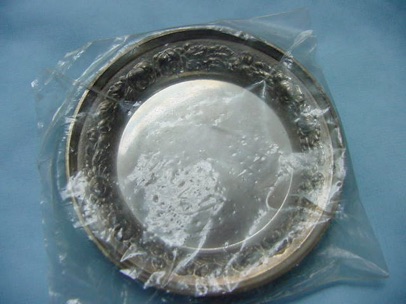
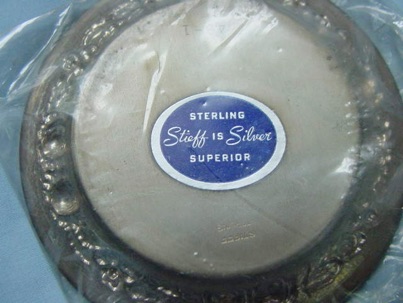
This is a 1959 Individual Ash Tray
(from my personal collection)
This is a 1946 Personal Humidor for storing cigarettes
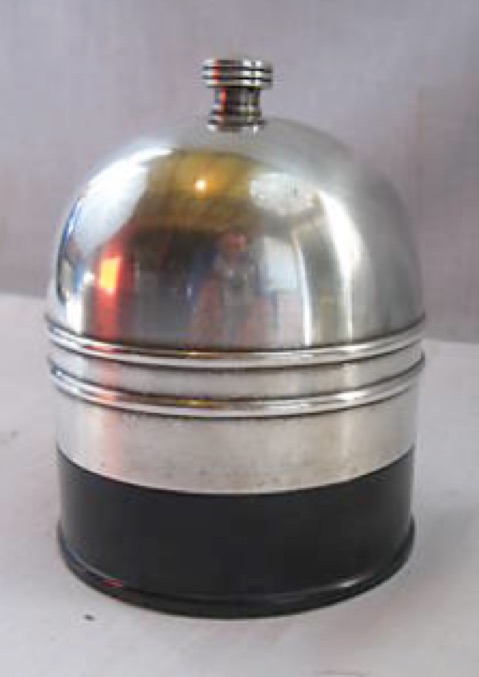
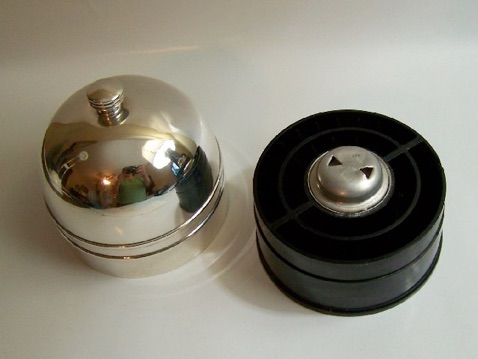
The vented center section with two holes, holds chalk to absorb moisture if you were in a humid climate,
or a sponge if you were in an arid region to add moisture. Holds 2 packs of cigarettes in the old short style
like Camels or Lucky Strikes.
Carries a 1935 patent date (not a Stieff patent) Dome is Sterling Stieff # 0811
(from my personal collection)
Punch Bowls
This one is marked BSSCo.
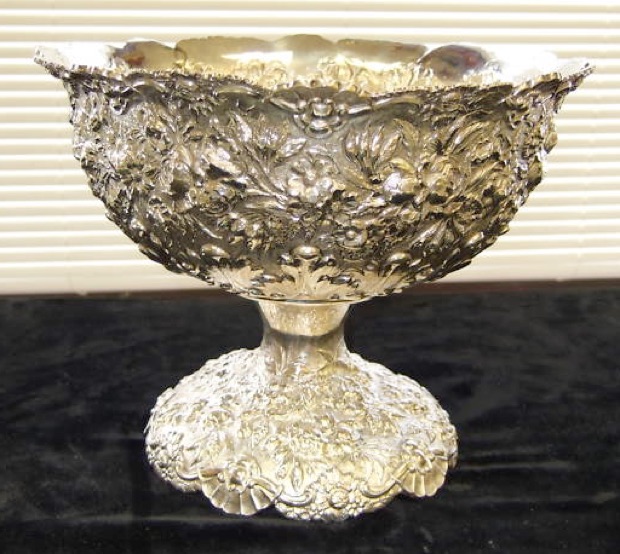
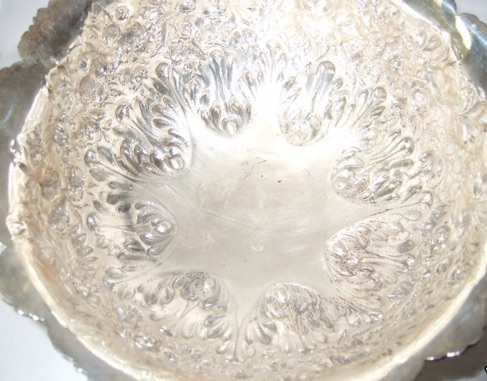
The interior of the bowl
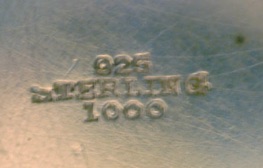
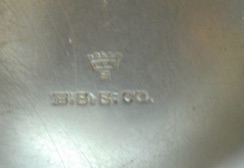
The Sterling Mark and the Hallmark of Baltimore Sterling Silver Co. w/ Crown B
Hot Water Kettles
With a small burner underneath, water for tea could be kept hot at the table or where ever tea was being served. Esp. helpful for garden parties.
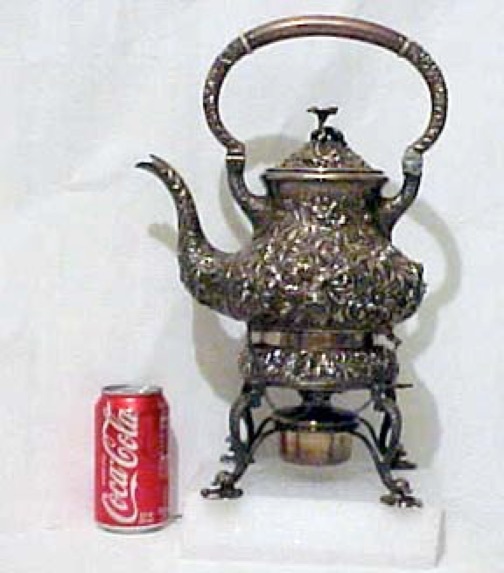
Scale can be seen here with the #700 (about 18” tall)

Pins with safety chains kept the kettle for falling off the stand.
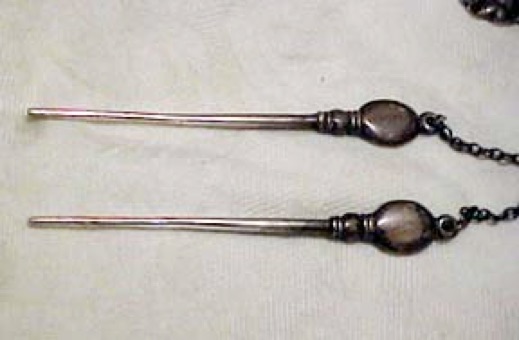
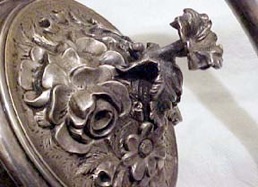
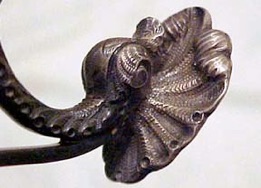
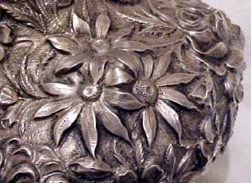
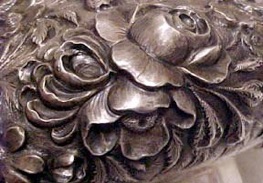
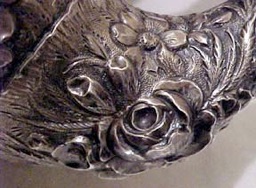
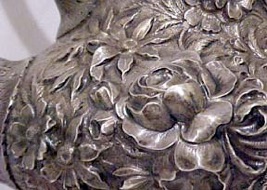
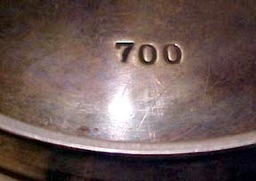
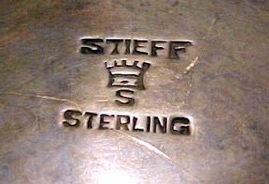
While the mark is not shown here, this is a 1915 Kettle
These Kettles, while not show in the catalog were still available in the 1970s as special order items. Image the delight that the silversmith would get when an order like this would come in the 1970s. A 1968 price list gives the price of a #700 Kettle as $3150.00, half the price of a new Cadillac
The Soup Ladle
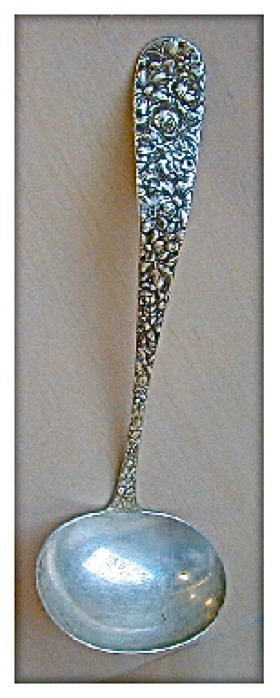

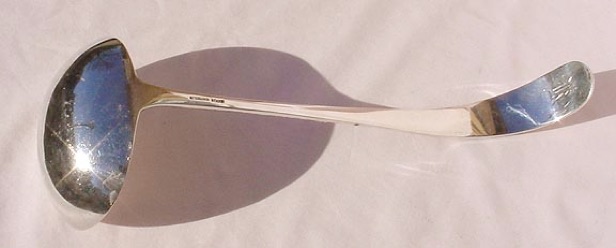
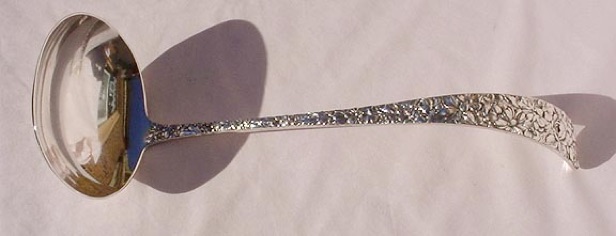
12 Inches long and 8 ounces of silver
Shown, Stieff Rose pattern
Expensive years ago, not many of the soup ladles were made.
These rarely come on the market now
Original Lenox China inserts for Stieff Silver.
Lenox made the China Inserts for certain Stieff Silver pieces. Generations later, Lenox* bought Stieff in 1990.
*Lenox division of the Brown-Forman Company
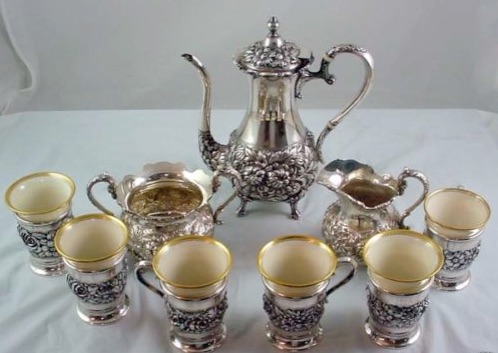
These #150 coffee cups came with matching saucers. They seem to be missing from this set now.
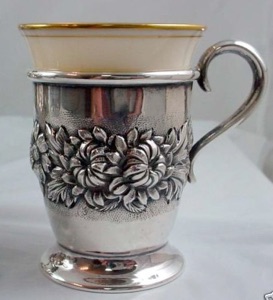
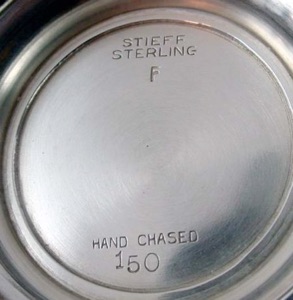
This set is from 1941 as denoted by the F date marking
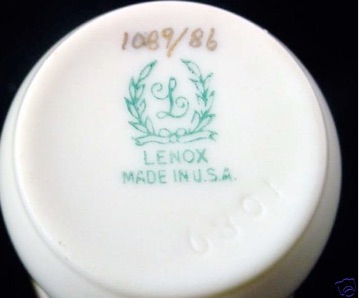
These China inserts are very fragile. To find a set of 6 is very rare.
Sterling Silver Glove Stretchers

Back in the day when proper ladies (wealthy) still regularly wore Kid Gloves... those gloves would need to be stretched, especially if it was the first wearing of the season. The pointed end would be places in the glove and the handle gently squeezed. This stretched the gloves just enough for the fingers to go in, and then the glove would form fit around the fingers.
While Stieff Sterling Letter Openers in the Rose pattern are not rare, you rarely see the
1932 Bi-Centennial George Washington Letter Opener
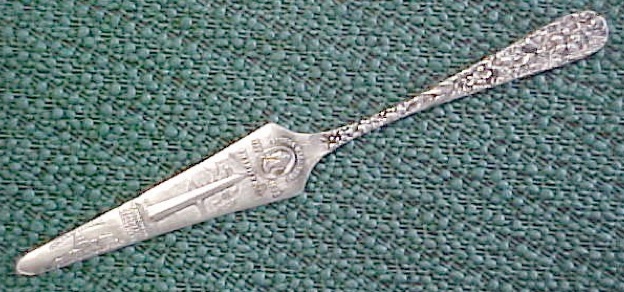
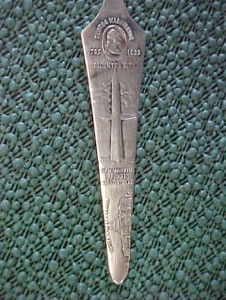
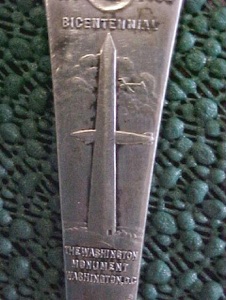

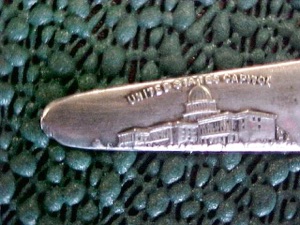
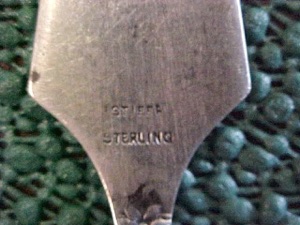
The image is only on one side. The pattern shows on both sides.
Tea/Service Bells
The service bell was used to call staff when needed. Otherwise they were expected to stay out of ear shot so not to hear polite conversation.. or the gossip of the day concerning others of the elite social circles. A quick ring would bring a staff member with fresh coffee or would let them know it was time to clear the table or bring the next course. The ring is high and clear.
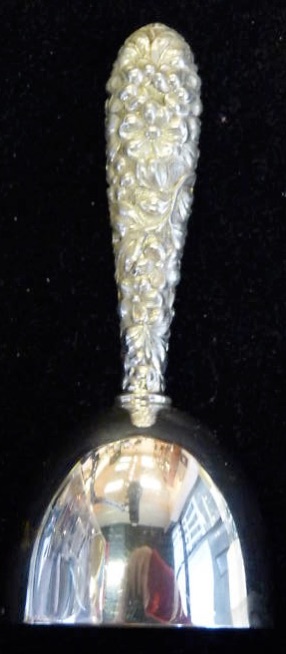
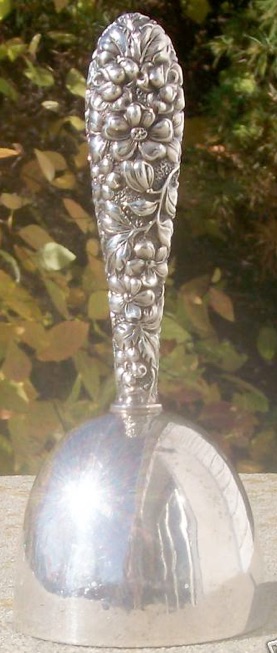

The arrow is the mark for 1932
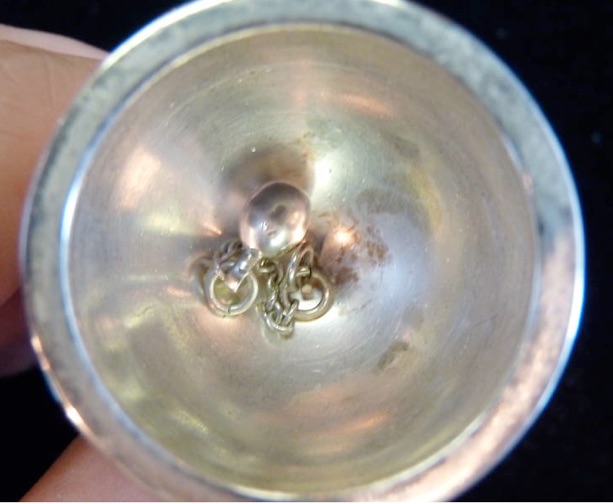
The one pictured here is 100% Stieff Sterling, right down to the clapper inside.
Some bells have been “made-up” using a silver plated bell and a hollow handle.
Look for the STIEFF name on the bell to be sure is is a genuine Stieff bell and not a modern “re-crafting”
To return to the first page of rarely seen Stieff items click below
click below for
or
More Spectacular and rare Stieff Silver
and the list keeps going with
Large Trays
While tea and coffee sets are not very common, the large trays that one sometimes sees are fairly rare. They were very expensive as they required a lot of silver thickness to be able to hold the weight of a coffee and tea service, full of liquid. Often, the trays were never ordered, so few sets actually have them. Here is a beautiful example of a 1958 tray.
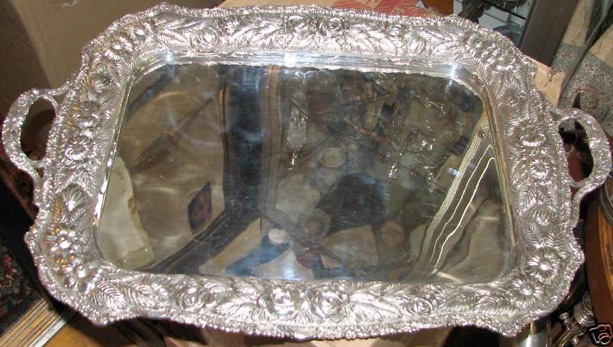
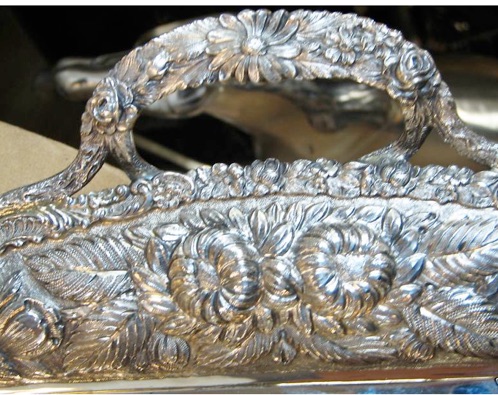
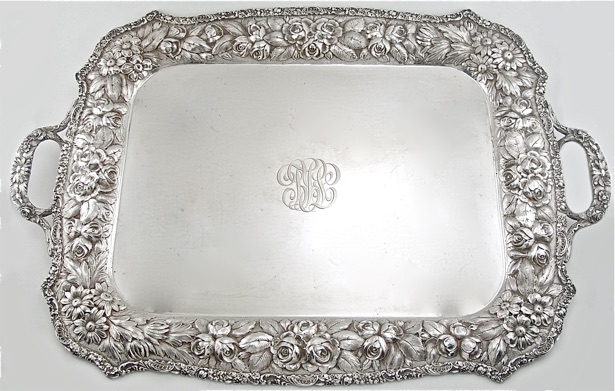
28.75 inches wide, handle to handle and 19.25 inches in width
To see one of the last big trays made by Stieff, click on the photo below
The BSSCO Stamp
Before the STIEFF name went on the company, Charles Stieff called the company “The Baltimore Sterling Silver Company”.
This name was used from about 1893-1904. The earlier 1892 name was
The Sterling Silver Manufacturing Company.
The actual first name was used for less than a year... The Florence Silver Company, but no silver has been found with that name.
Pieces with the BSSCo. mark are rare.
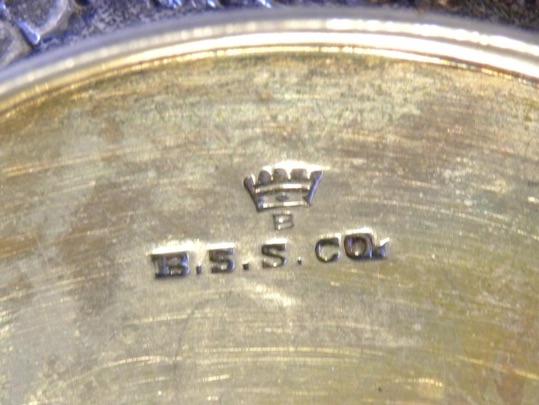
Note the differences in the two crowns, both with the B mark.
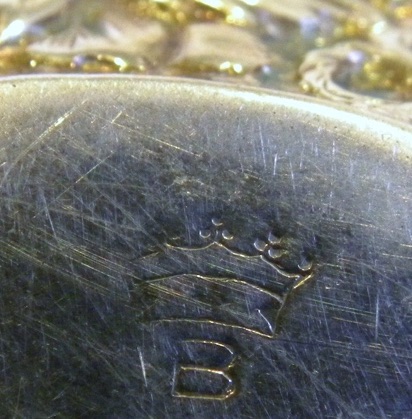
The CROWN MARK can take on different looks. This one is very rare.
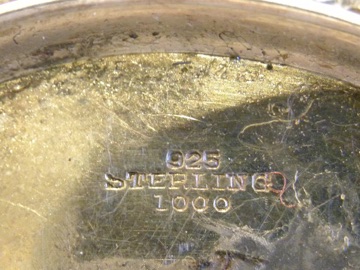
Cocktail Shakers
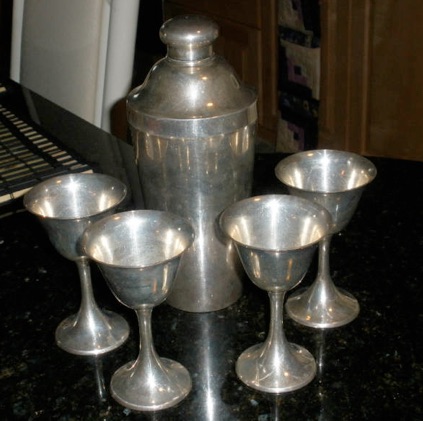
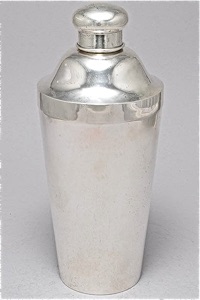
A cocktail shaker in Sterling Silver made quite a statement
Never made in large numbers, even more rare today.
9.5 Inches tall, weight 13.4 Troy Ounces.
The 1952 Dealer book shows the shaker at 48.00 and the “cocktail cups”
at 11.00 each. Very expensive for 1952.
1950’s self measuring liquor pour
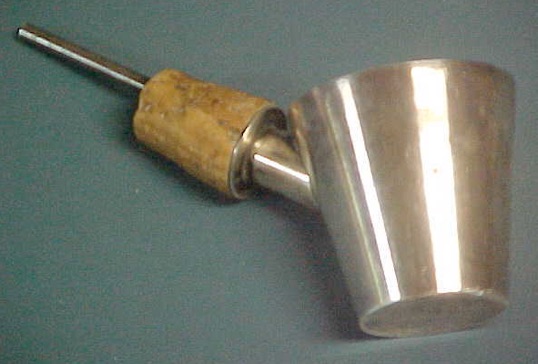
These pour jiggers are fun... but very hard to find. Made in the early 1950s, they pour an exact measure and then stop the flow automatically. But having this on the end of a bottle, it does become a bit tricky to twist your wrist to pour the contents into a glass while grasping a bottle of liquor. I use these in my bar... just because they are still fun to see and explain to guests.
The jigger part is fairly thin and bends easily when dropped or a bottle knocked over. Also, as you hold the jigger to pull the cork out of the bottle.. the jigger will bend. You have to grasp that little neck ... not the jigger. Because of this not many have survived. The marking on these is under the cork of the flange and in the exact spot where the pourer is added to the side of the jigger. Because of this location, it is often very hard to find the words STIEFF or Sterling. Normally only parts of the words appear. These were not made very long and do not appear in price lists or the catalog. These are certainly fun, but not very practical, esp. if you are on your 2nd or 3rd drink of the evening.
Stieff Date marks on HOLLOW WARE started in 1901
Pieces with the Crown B or BSSCO marks 1904 or earlier. Pieces without the date marks are normally pre-1901, but some pieces escaped the factory with out date marks, so one can not assume that the lack of a date mark means pre-1901. If the STIEFF name is used, it is 1904 or later
This set of pepper towers carry the “Crown B” mark but not the BSSCo. mark and no date marks, so they probably date from the period from 1892-1900.
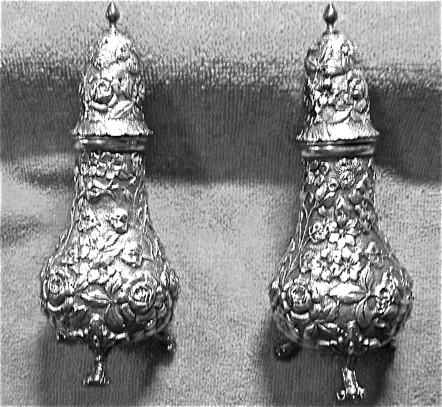
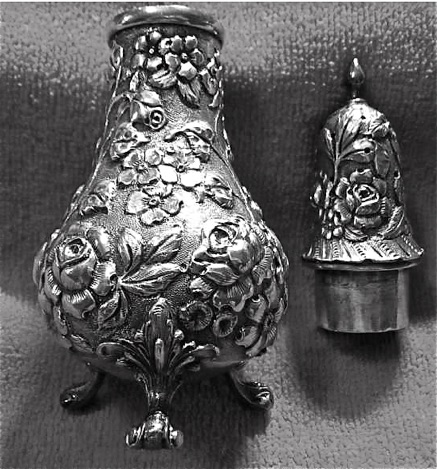
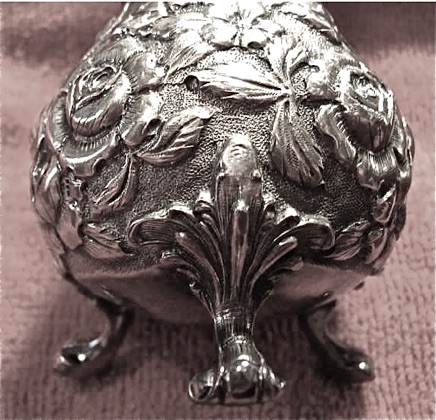
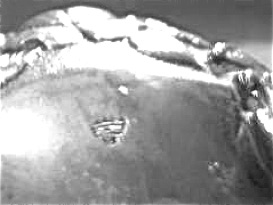
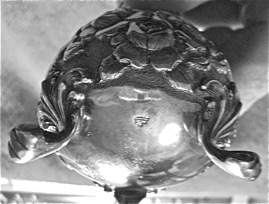
Baltimore Sterling Silver Co. made products for other retailers. Those companies would normally then mark the silver with their own name. This was common at the time, and today we would call it a “private label” Companies like Hennegan Bates & Co. sold silver made by BSSCo. with Hennegan Bates markings.
Sometimes the retailers would just sell the silver with no extra marks...
and the above example could be one of those pieces.
This is a DRESSING FORK
Also known as a PLATTER FORK
Huge in size, it measures 13.5 inches long and
weighs just under 7 ounces of silver.
There were very expensive and few were made.
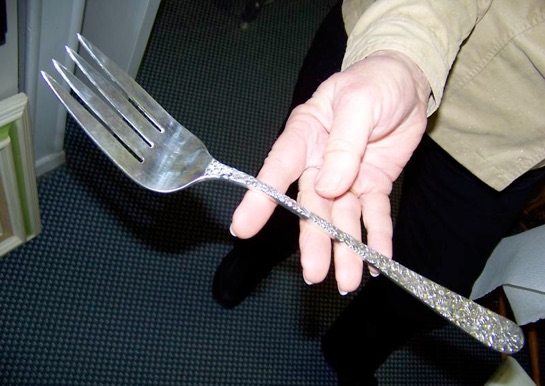
I use this photo from ebay to show the large size in proportion to the sellers hand.
